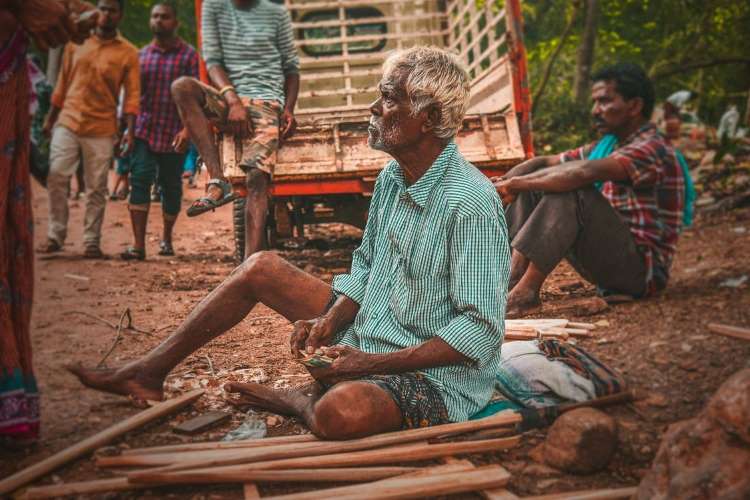
National Rural Livelihood Mission: Unemployment is a major factor behind lower income, lower skill levels and poor socioeconomic conditions of rural people. Data released by the Centre for Monitoring Indian Economy (CMIE) in May 2022 show that rural unemployment has risen to 7.8% from 7.12% of the total workforce. Around two thirds of the Indian population live in rural areas. India’s agriculture sector provides livelihood to about 70% of the rural population, out of which 82% belong to the small and marginal farmers category.
Deendayal Antyodaya Yojana: National Rural Livelihood Mission (DAY-NRLM) relies on three supporting structures — financial inclusion, enhancement of livelihood and universal social mobilisation of the rural poor. A thrust area for this scheme is the empowerment of poor women in rural areas by having at least one woman from every rural household in a self-help group (SHG).
READ I The monkeypox threat: Here’s all you need to know about the deadly virus
SHGs and National Rural Livelihood Mission
According to the ministry of rural development (MORD), DAY-NRLM is operating in 6769 blocks in 706 districts belonging to 30 states and six Union territories. This scheme relies on SHGs for the elimination of rural poverty. SHGs are groups formed by rural people involving about 10-20 members. DAY-NRLM has a provision of offering institutional credit to establish micro enterprises in rural areas for these groups. This scheme has successfully transformed about 8.01 crore female members belonging to the vulnerable and poor sections of the society into about 73.19 lakh SHGs.
India has 6.9 million SHGs which has about 75 million members as on May 2021. NRLM has made rural people more empowered in terms of healthcare and educational facilities. It has enhanced the income for the rural poor which makes the rural people eligible to buy land for growing food, end gender discrimination, child marriage, dowry system, and other forms of gender discrimination.
SHGs are effective in improving participation of women in political parties, enhancing financial literacy, offering knowledge and awareness of administrative facilities, supporting involvement in decision-making and improved mobility. According to the World Bank, this scheme has also supported rural women to become a part of the workforce and resulted in larger participation by women members in SHGs. A 20.4% rise in various self-employment activities was noticed between 2011 and 2017 by a study by World Bank.
NRLM has also helped improve financial literacy among rural women and helped them avail institutional credit. This helped them stand on their feet without any external support. This scheme has combined many approaches to make this scheme result-oriented by using social capital, micro institutional loans and skill enhancement, resulting in enhanced family income of beneficiaries. They have developed a favourable attitude towards saving habit. It is also noticed that members of SHGs under DAY-NRLM and their family members are giving preference to various kinds of insurance schemes related to disability, health and life.
Despite these achievements, there are several challenges that needs to be addressed. A majority of SHGs are working in the farm sector and engaged in agricultural activities which has made them less productive as the primary sector is already facing disguised unemployment. Due to this, SHGs are not able to absorb the latest technologies available in the market to improve the efficiency of the enterprise.
The way forward
A majority of SHGs are just acting as microfinance providers, not as business enterprises. A huge constraint in way of effective implementation of the scheme is unwilling female members of SHGs working in rural areas. At several places, rural women are not even allowed to go outside their homes for business activities. They have less freedom to involve in the decision-making process at mostly everything is pre-decided in the scheme. The DAY-NRLM has received a smaller allocation compared with other employment generation schemes such as MGNREGS which reduces its scope for poverty reduction.
DAY-NRLM should focus on both agricultural and non-agricultural sectors and simultaneously give attention to the enhancement of livelihood through rising income-earning opportunities and expanding entrepreneurship skills. The scheme may also expand its scope towards the private sector and start-up business entities to empower them for employment generation in rural areas.
The Union budget for the current financial year has allocated more funds for DAY-NRLM which promises an increase in the number of beneficiaries, making it more transformative for the development of rural areas. This scheme has helped the rural poor by creating jobs, enhancing skills and other livelihood enhancement facilities without gender bias while achieving financial empowerment of female members of rural households.
(Dr Ravi Kumar Gupta is an Assistant Professor and Udit Maheshwari is a Research Assistant at the Department of Humanities Management Science, Madan Mohan Malaviya University of Technology.)
